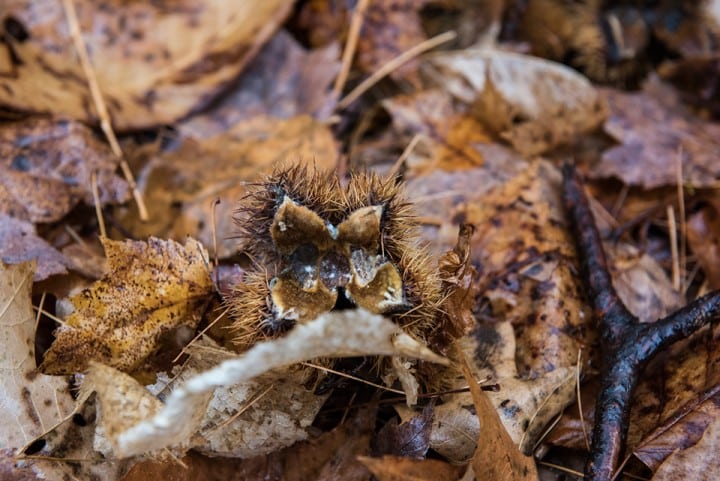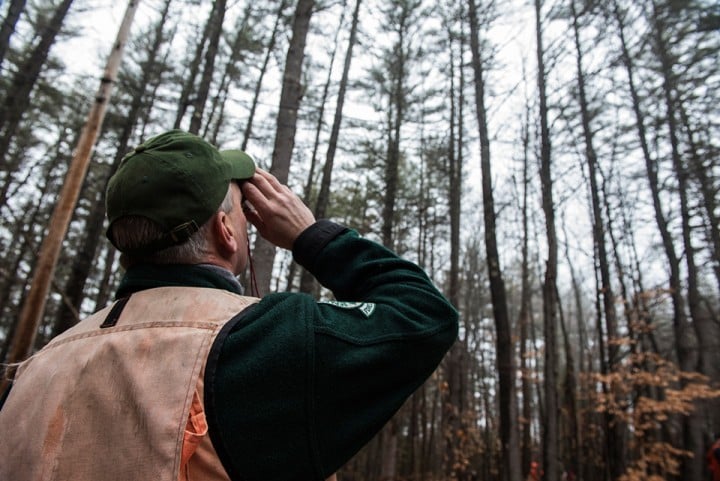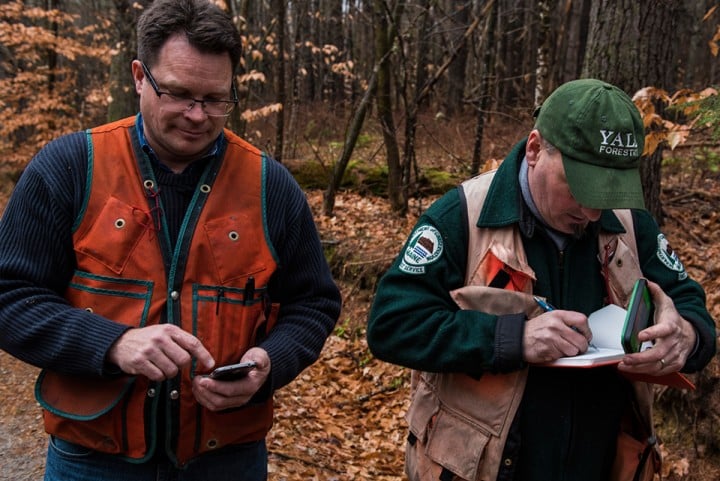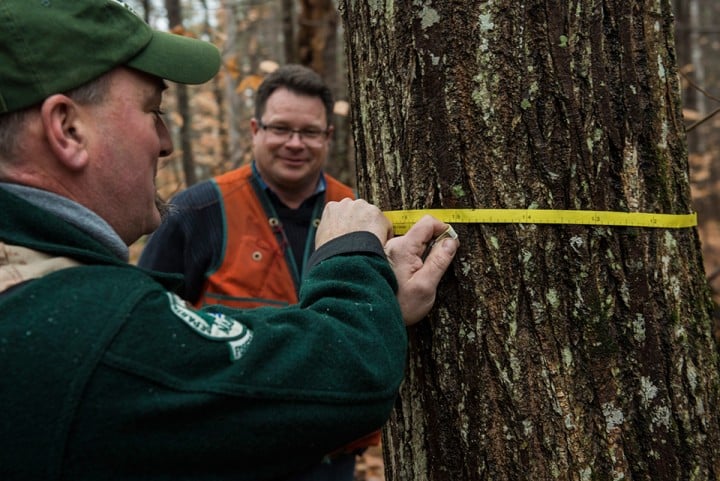Foresters with the Maine Forest Service and the University of Maine have measured what is believed to be the tallest American chestnut (Castanea dentata) tree in North America, exceeding the next tallest known tree by 20 feet in height. The 115-foot-tall tree is growing on land in Lovell, Me. that was bequeathed to the University of Maine Foundation. Prior to donating it to the University Foundation, the Volk family owned the property for more than 100 years. Douglas Volk (23 February 1856 – 1935) was a famous American portrait and landscape painter with works found in most American collections. Now, the property is home to an artist colony which houses many artists during the summer months.
It is estimated that there are only a few dozen large surviving trees such as this one left in the Maine woods. The American Chestnut Foundation (TACF) is racing to discover what few remaining native American chestnut trees still exist in an effort to conserve American chestnut tree genetics, and to learn about the soils and forest conditions in which they are growing. The Maine Chapter of The American Chestnut Foundation has partnered with the Barbara Wheatland Geospatial Analysis Laboratory at the University of Maine to use remote sensing from airplanes to help locate unknown trees such as this one.
An official measurement of the tree took place on Dec. 2, 2015. TACF President and CEO Lisa Thomson, TACF Geneticist Dr. Jared Westbrook, University of Maine Forest Scientist Dr. Brian Roth, along with representatives from the Maine Forest Service and Dan Willett from the University of Maine Foundation were present for interviews and to answer questions.
Once the mighty giants of the eastern forest, American chestnut trees stood up to 100 feet tall, and numbered in the billions from Maine to Georgia. In the beginning of the 20th century the fungal pathogen responsible for chestnut blight was accidentally imported into the U.S. from Asia and spread rapidly. By 1950 the fungus had eliminated the American chestnut as a mature forest tree. In 1983, a group of scientists and laymen decided to do something about this ecological disaster while the species could still be saved. They formed The American Chestnut Foundation and initiated a complex breeding program to transfer genes containing disease resistance from Asian chestnut species to American chestnut.

Joe Klementovich, 2015

Joe Klementovich, 2015

Joe Klementovich, 2015

Joe Klementovich, 2015
CONTACTS:
Ruth Gregory Goodridge, Director of Communications, The American Chestnut Foundation, 50 North Merrimon Avenue, Suite 115, Asheville, NC 28804. 828-281-0047, ext. 305. ruth@acf.org
Brian Roth, University of Maine, School of Forest Resources
(207) 944-1392. brian.roth@maine.edu

